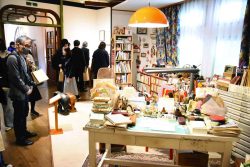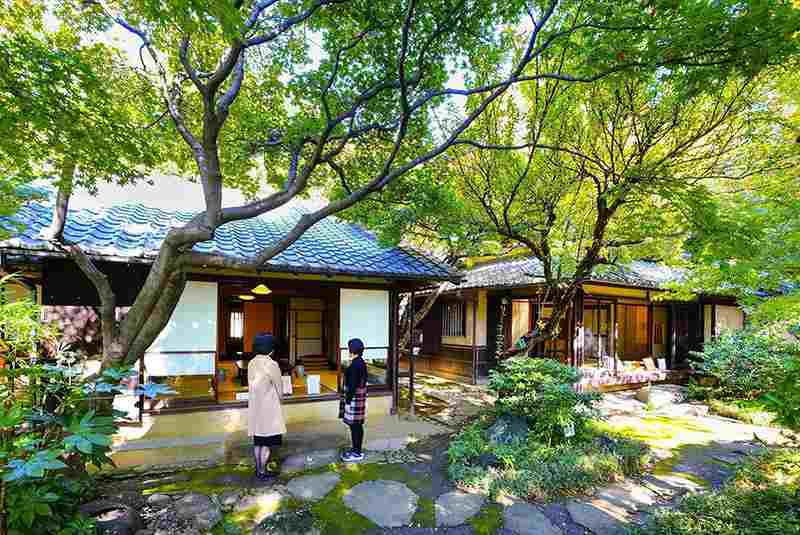
Two houses designed by architect Bunzo Yamaguchi are seen. Many cultural figures such as Yasunari Kawabata and Yukio Mishima are said to have visited the home to see Hayashi.
14:51 JST, December 21, 2021
Fumiko Hayashi’s autobiography “Horoki” (Diary of a Vagabond) opens with the famous line, “I am destined to be a wanderer.” The Hayashi Fumiko Memorial Hall in Shinjuku Ward, Tokyo, shows her work and lifestyle in two renovated houses in which she lived for 10 years until her death at the age of 47.
Hayashi (1903-51) spent much of her childhood living in cheap lodging houses with her parents, who were peddlers. She moved to Tokyo in her late 20s in pursuit of her lover and worked a variety of odd jobs, including as a public bath attendant in charge of customer footwear, a factory worker and a street vendor. She could barely scrape by and lived a large portion of her life without decent clothes.
But her luck changed in 1930 with the publication of “Horoki,” a book she based on her journals. The book became a bestseller and bought Hayashi fame. That same year, she moved to Shinjuku Ward.
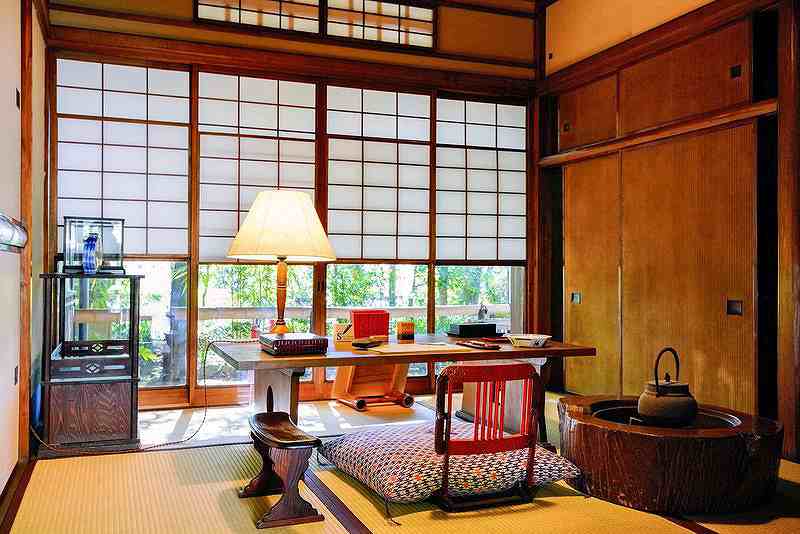
Hayashi’s study. The room was originally built as a storage room.
In 1939, she bought a plot of land there and built two houses in the Sukiya-zukuri tea ceremony style. Because of wartime restrictions on square footage for buildings, Hayashi built two houses each measuring about 100 square meters and connected them via back doors.
One of the houses, built under Hayashi’s name, was where she lived, and the other, constructed under the name of her husband and painter, Rokubin, was used as his studio. For furnishings, Hayashi chose simple yet sophisticated lights, desks and other items.
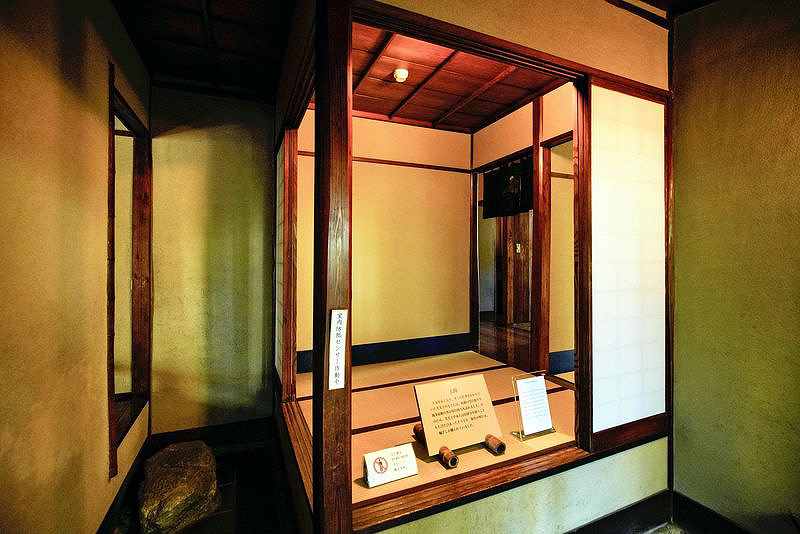
The room at the back of the entrance was used as a waiting room for visitors.
The study where Hayashi devoted herself to writing has glass and paper yukimi shoji screens that open to a garden view. It is said that when Hayashi was absorbed in her work, she would take off her glasses and write with her face pressed against her desk.
The kitchen features cast stone in its design and the sink was built to accommodate for Hayashi’s height of 1.43 meters. Her dishes have remained untouched in the cupboard and show that she liked simple, utilitarian tableware, which was seen in the folk craft movement advocated by Muneyoshi Yanagi.
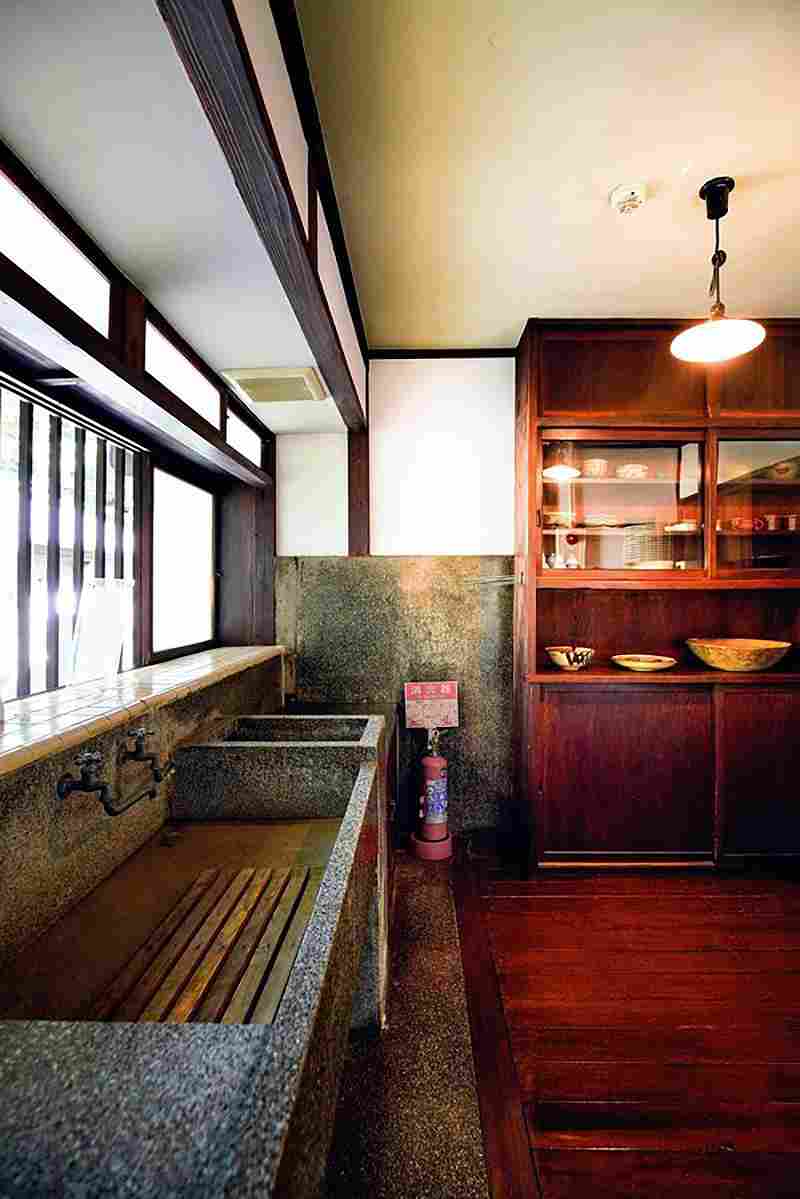
Hayashi’s kitchen. Hayashi is said to have been a capable cook.
Hayashi wrote: “I don’t need any luxuries. It is important to live in a comfortable place, rather than a house made to show others.”
Hayashi was very particular. It is said that she read many reference books and drew nearly 100 blueprints for her home. At one point, she brought a carpenter along to Kyoto to study construction. She bought the building’s wood materials herself.
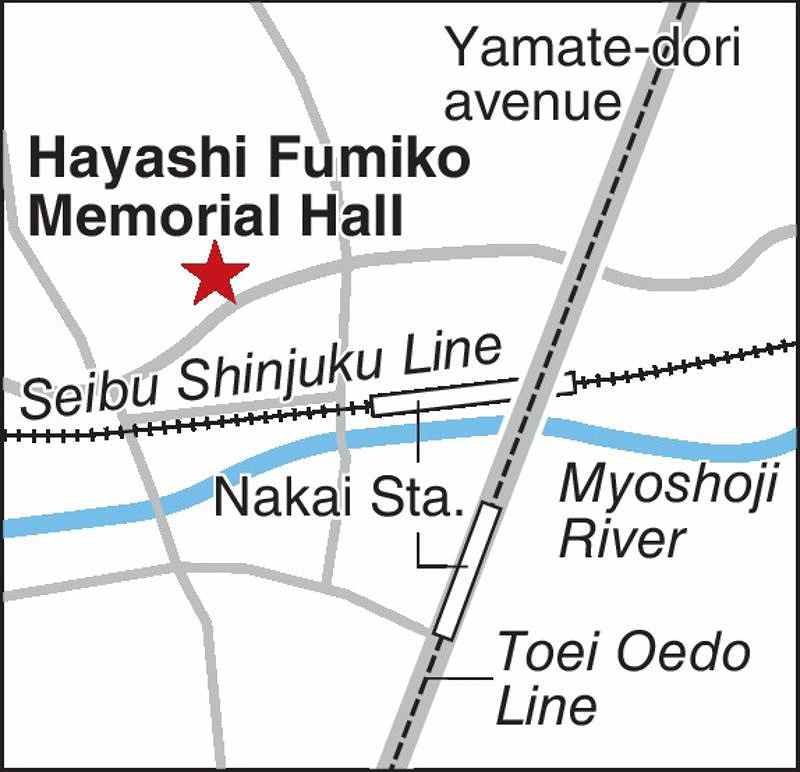
This year marks the 70th anniversary of Hayashi’s death. Many cultural figures are believed to have lived around the museum. Izumi Sato, curator of the museum, said: “There are many people in the neighborhood who no longer know about Hayashi. These houses have the value of conveying the memory of the community, too.”
Hayashi Fumiko Memorial Hall: 2-20-1 Nakai, Shinjuku Ward, Tokyo
"Culture" POPULAR ARTICLE
-

Van Cleef & Arpels Dazzles with Art Deco Artisanry at Tokyo Exhibit
-

Disney’s ‘Twisted-Wonderland’ Animated Series Puts Villains in Spotlight: New Show Features School Inspired by Classic Disney Films
-

Ayumi Hamasaki’s Shanghai Concert Canceled Day Before Schedule as Part of Beijing Backlash
-

‘The World Masterpiece Theater Series’ Celebrates 50 Years; Animator Looks Back on Creating Anime Classics
-

Popularity of Piggy Banks Across Time and Place Seen at Bank’s Museum of Money Boxes in Hyogo Pref.
JN ACCESS RANKING
-

Tokyo Economic Security Forum to Hold Inaugural Meeting Amid Tense Global Environment
-

Keidanren Chairman Yoshinobu Tsutsui Visits Kashiwazaki-Kariwa Nuclear Power Plant; Inspects New Emergency Safety System
-

Imports of Rare Earths from China Facing Delays, May Be Caused by Deterioration of Japan-China Relations
-

University of Tokyo Professor Discusses Japanese Economic Security in Interview Ahead of Forum
-

Japan Pulls out of Vietnam Nuclear Project, Complicating Hanoi’s Power Plans



